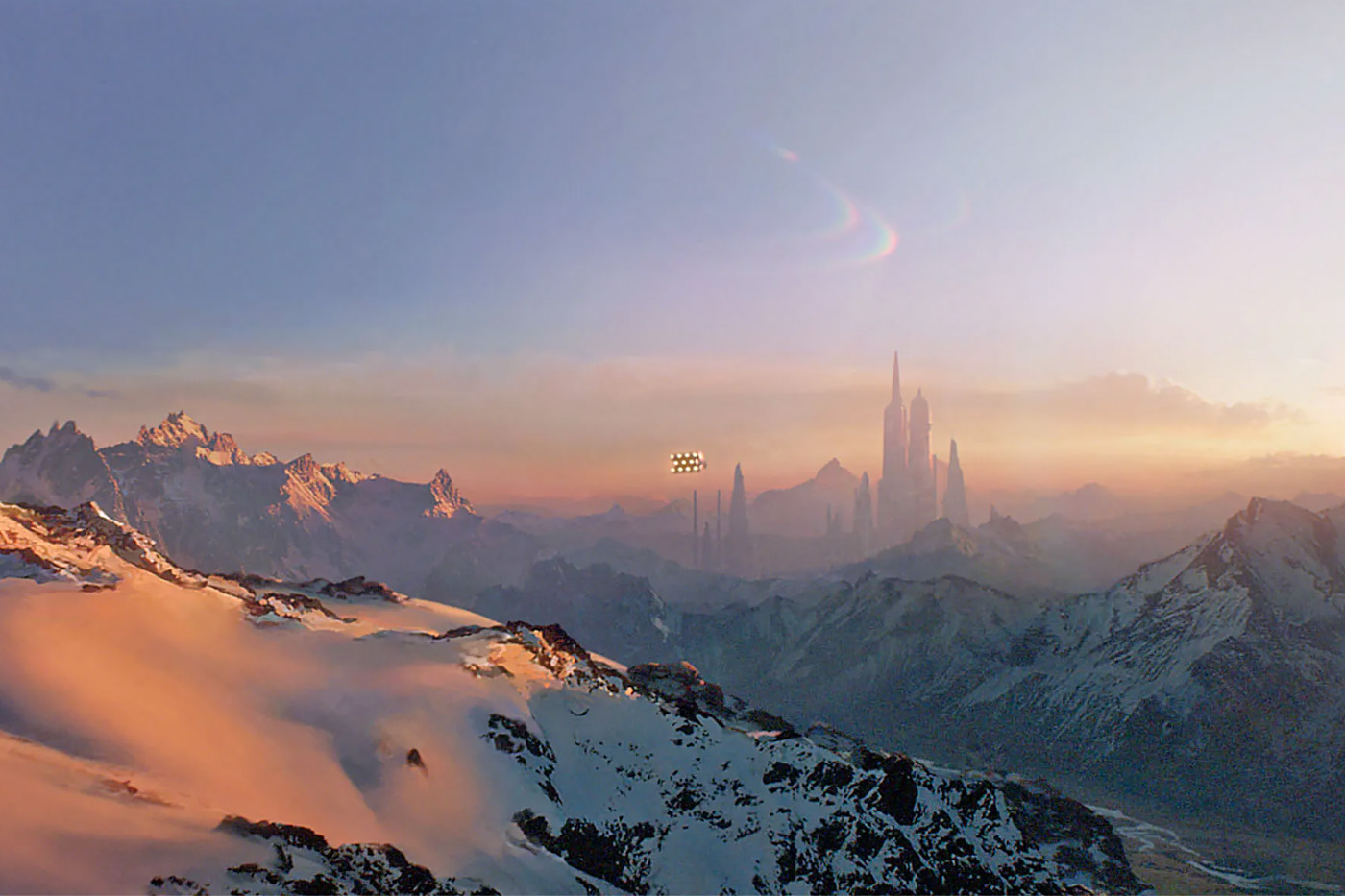Travelling talent seeks computer-generated success

Behind the Zurich computer scientist who this year was awarded a Technical Oscar is a small but highly skilled visual effects (VFX) workforce. swissinfo.ch looks at the dynamic but competitive industry and the challenges facing those starting out.
“I was surprised,” Markus Gross, professor of computer graphics at the Federal Institute of technology in Zurich (ETHZ) and director of Disney Research Zurich, admitted (see article).
“I knew the technology we developed a few years ago had been picked up by lots of visual effects studios and that it was being used in Hollywood films, but I didn’t expect the Academy would award it to us so quickly.”
The software developed by Gross, which since its publication only four years ago has become an industry standard, generates realistic smoke and explosions quickly and, more importantly, cheaply (see video).
“The problem in Switzerland is that clients are not really aware of the costs of the effects,” said Vincent Frei, co-founder and president of Swiss Made VFX, a Lausanne-based association which aims to promote Swiss artists working in visual effects.
“They simply think that we press some buttons and a dinosaur appears – and when they discover the budget, they run away.”
Frei admits that from a global point of view Switzerland is “barely on the VFX map”.
“We don’t really have a movie industry. Many designers are forced to work outside Switzerland. I worked in Paris, London and Montreal. Other artists in Zurich, which along with Geneva is the centre for visual effects in Switzerland, go to Los Angeles or Germany.”

More
Where there’s smoke, there’s an Oscar
Subsidy wars
He also says Swiss VFX companies struggle to compete because of tax rebates.
Compared with governments of other countries such as Canada, Britain and New Zealand (which paid NZ$45 million (CHF35 million) in tax subsidies to Fox Studios to make Avatar there), the Swiss government provides little support.
Nevertheless, despite this lack of incentive for international film studios to make use of Swiss talent, Frei says the Tech Oscar was “really good news”, describing the collaboration between academic institutions and film studios as a “win-win situation”.
“It’s good for both sides because the universities have really good research scientists who have the time to develop new technologies – if you want to do that inside the studio, it’s really expensive,” he told swissinfo.ch.
“The university enjoys the glory if its work is chosen by a studio – if it appears in big films like Avatar for example it’s a kind of publicity for the university. And it’s time-saving and cheaper for the studio.”
Another challenge facing the Swiss VFX industry, according to Frei, is that Swiss directors prefer to make “small movies set in an apartment” rather than big productions.
“For example, three years ago, the first Swiss sci-fi movie was made, Cargo. It took seven years to complete. Those projects are really complicated in Switzerland.”

More
When Swiss scientists went to Hollywood
Collaborations
“Everyone said Cargo was not possible, but it was finished,” said Miklos Kozary, visual effects supervisor at Zurich-based Elefant Studios, which contributed to Cargo.
The film’s VFX were critically praised. “The great triumph of Cargo lies within its special effects. With a total budget of [CHF4.5 million], where a half-million was used for post-production, it is commendable at what the filmmakers have accomplished,” wrote the reviewer for AFI FEST, the American Film Institute’s annual celebration of international cinema.
“From the opening shot of the film … you are immediately in awe at the remarkable work the special effects team has done.”
Kozary believes university-studio collaborations will continue because research and development is such a key aspect of visual effects production – “especially at the level where you’re going into large-budget productions that require a lot of effects that haven’t been done before”.
A look at the highest-grossing films of last year (see link) shows every film in the top ten relying heavily on visual effects – proof that the VFX industry is more central to Hollywood’s business model than big-name stars.
Special effects (SFX) are shot on set by a camera. Visual effects (VFX) are added in post-production using a computer.
VFX involves the integration of live-action footage and computer-generated imagery (CGI) to create environments which look realistic, but would be dangerous, costly, or simply impossible to capture on film.
CGI is the application of computer graphics to create or contribute to images in art, printed media, video games, films, television programmes, commercials, simulators and simulation in general.
Computer animation refers to dynamic CGI rendered as a film.
Brain drain
In addition to partnerships like that between the ETHZ and Disney, Kozary says there are also cooperation in Switzerland at lower levels.
“Elefant Studios, for example, has a collaboration with the University of Applied Sciences in Zurich in which we’re working on research for pipelines – the way data is moved between artists and tasks of visual effects production,” he told swissinfo.ch.
“We’re trying to compete on an international level. That’s new for Switzerland and also quite hard as there’s no real education in visual effects in Switzerland – compared with Germany and France – which makes it difficult to get skilled junior artists to work on projects,” he said.
“There’s a lot of talented Swiss artists who are working abroad on some of the biggest Hollywood productions. And most Swiss after a few years want to come home, so we always have a returning influx of skilful, experienced artists.”
Kozary says Elefant Studios has a staff of 20, of whom “95 per cent” are Swiss and half of them went abroad to gain experience and then came home – most of the other artists have been trained on the job.

More
‘Digital has a future – but no past!’
Obstacles
One young Swiss who didn’t give up on his American dream is Raffael Dickreuter, a designer and photographer based in Los Angeles who worked on blockbusters such as Terminator Salvation, The Incredible Hulk, Superman Returns and Iron Man.
“It was very hard and took a long time. When I was 16, I knew I wanted to work in this industry but in all it took eight or nine years until that finally happened,” he told swissinfo.ch.
Dickreuter, now 32, lists several obstacles facing Swiss artists making the move to Hollywood, from getting a green card or work visa to building up an excellent portfolio and contacts.
“I was in Switzerland, knew absolutely nobody in the industry so it seemed an impossible task. I ended up at a Web design company and learned 3D and visual effects on the side,” he said.
“[In 2006] I got offered an internship in LA and worked on my first big film, Superman Returns, and that’s how it got started. It was a long, hard road with an endless amount of rejection and obstacles, but I always knew I had no choice but to keep going.”
Winners at the 85th Academy Awards, which took place on February 24, 2013, at the Dolby Theatre in Los Angeles, include:
Best Picture:Argo
Best Director: Ang Lee, Life of Pi
Best Actor: Daniel Day-Lewis, Lincoln
Best Actress: Jennifer Lawrence, Silver Linings Playbook
Best Animated Feature:Brave
Best Foreign Language Film:Amour (Austria)
Best Documentary:Searching for Sugar Man
Best Visual Effects:Life of Pi
No Swiss were in the running. Markus Gross, his former post-doc Nils Thürey, Cornell professor Doug James and his former researcher Theodore Kim received the Technical Achievement Award at a ceremony in Beverly Hills on February 9.
Certain film scenes that were generated using the award-winning software were screened at the main ceremony.

In compliance with the JTI standards
More: SWI swissinfo.ch certified by the Journalism Trust Initiative










You can find an overview of ongoing debates with our journalists here . Please join us!
If you want to start a conversation about a topic raised in this article or want to report factual errors, email us at english@swissinfo.ch.